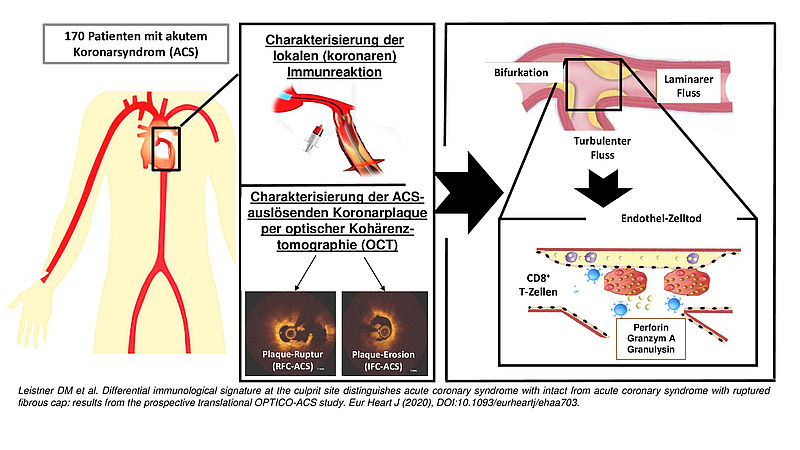An acute coronary syndrome is a life-threatening circulatory disorder of the heart muscle caused by narrowed coronary arteries. Plaques represent a significant contributing factor as they can give rise to blood clots (thrombi), detaching and blocking coronary arteries. What triggers blood clot formation and, thus, the subsequent heart attack is not yet entirely understood. For a long time, researchers suspected that these blood clots were caused exclusively by a rupture of the connective tissue sheath around the deposit and the underlying material's release. DZHK researchers at the Charité – Universitätsmedizin Berlin have now been able to uncover another mechanism that is mainly driven by a misguided adaptive immune system.
In the OPTICO-ACS study, the team led by the two study chairs, Professor David M. Leistner and Professor Ulf Landmesser, used a special imaging technique - so-called optical coherence tomography (OCT) - to provide high-resolution images of the heart attack-causing plaques in patients. These images enabled them to reliably divide whether rupture or erosion of the plaques started a heart attack. In about a quarter of the cases, blood clots caused by erosion were present. The immune cells' composition was also altered, the levels of CD4- and CD8-positive lymphocytes and their cytotoxic effector molecules were increased. This finding indicates an inflammatory response that can damage endothelial cells in the arterial wall. In these patients, the blood clots were also more frequently found in the vicinity of vascular branches. Special flow conditions there favour the accumulation of the blood clots on the inner wall of the vessel. The researchers were also able to confirm their findings in cell culture experiments.
The study is the first to explain why plaque erosion can trigger a heart attack. It also offers a new approach to research that will help to treat certain acute coronary syndrome forms more specifically in the future and thus avoid any subsequent clinical complications.
Publication
November 2020

